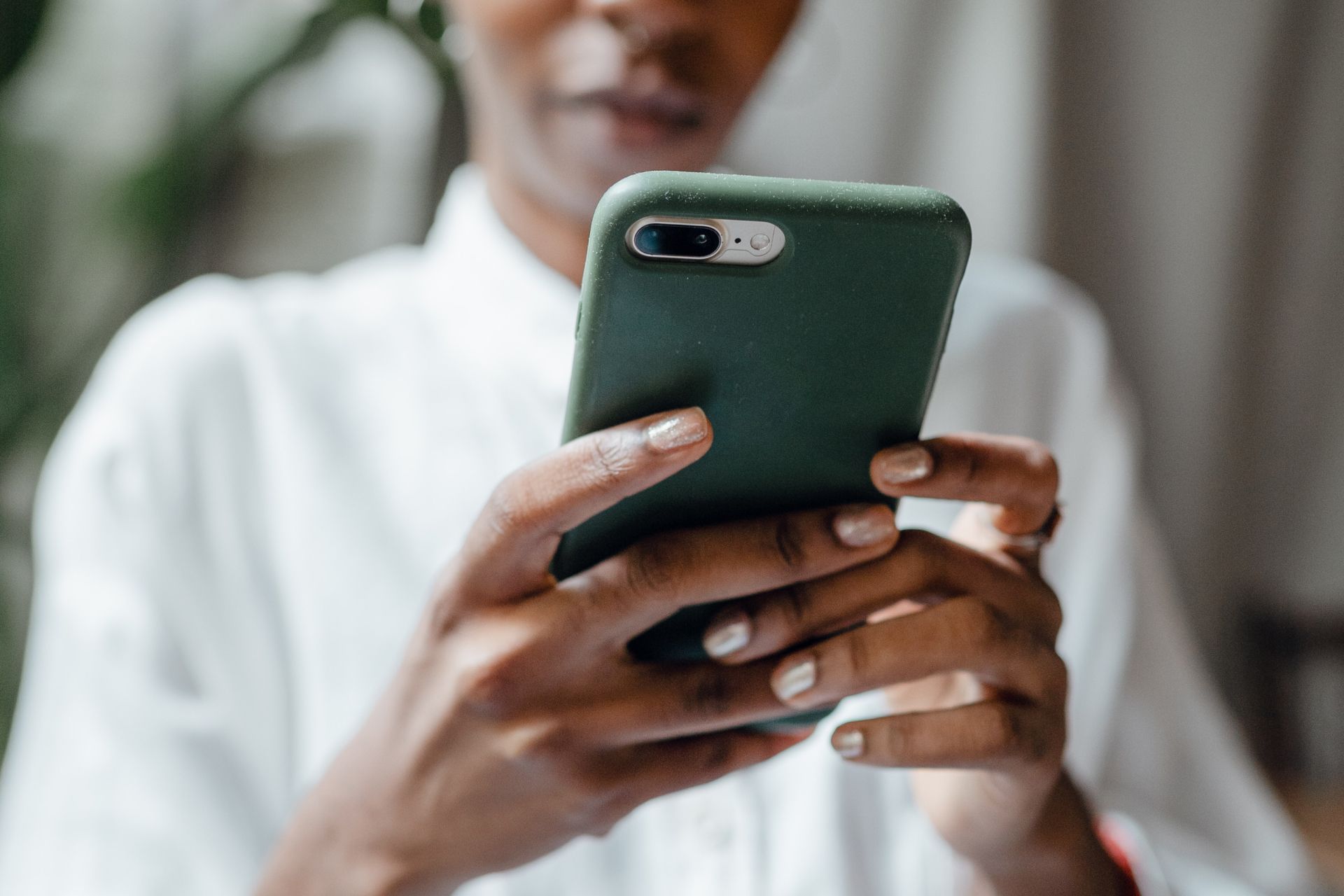Article
How to Improve Your Team’s Decision Making
February 11, 2021
A Disciplined Approach to Better Efficiency, Judgment and Results

Letting the Facts Win
The most powerful method for improving the quality of your decisions is to follow a disciplined decision-making process. Decisions are often contaminated by biases, a tendency to jump to conclusions, emotional reactivity and by pressure to act quickly. In this blog we will review both the benefits of following a disciplined decision process as well as how to implement this this process to improve the quality of the outcomes. When making decisions with a team, the conscious or unconscious influence of the leader can sabotage the entire discussion. The principles and practical suggestions in this article will be useful for both individual and group/team decision making, and for both professional and personal decisions that you need to make. The goal is to make objective decisions and let the facts win. Accomplishing this is a challenge for every leader.
The surprising key to effective decision making
Just as with individuals, there are principles and dynamics that can promote wise and effective team decisions. You might be surprised to learn that an even more crucial factor than gathering reliable data is having in place a disciplined process for involving the whole team in the making of important decisions.
Amazing and Relevant Research Research by behavioral economists Dan Lovallo and Olivier Sibony looked at 1,048 business decisions over five years tracked both the way the decisions were made, and the outcomes in terms of revenue, profits, and market share. Their focus was to understand the impact of bias on corporate strategy and the decisions that guided it. Most of the teams they studied had conducted rigorous analyses before making the decision, compiling financial models and assessing how investors might react to their plan. These were not decisions about what color chairs to buy for the conference room, but major decisions such as whether to launch a new product or service, change the structure of the company, enter a new country, or acquire another firm. They also looked at the results, the outcomes of these decision on revenue, profit, market share and return on investment.
Lovallo and Sibony also asked the teams to describe their decision-making process: how they went about making the decision. For example:
What they found was that the decision-making process that the teams utilized was far more important than analysis and having the right data – astonishingly, by a factor of six! Having the right data clearly matters, but it’s not enough. In other words, good analysis in the hands of smart people won’t always lead to good decisions. Even though detailed analysis is important, the decision-making process itself was six times more crucial to successful outcomes. When the decision-making process was improved there was a statistically significant improvement in financial results.
Why should this be? They concluded, "An unbiased decision-making process will do a lot is ferret out poor analysis. The reverse is not true; superb analysis is useless unless the decision process gives it a fair hearing…”. So, how can the leader ensure that a fair hearing is given to all the facts, relevant factors, and alternatives? How can we attain that level of objectivity and fairness required to minimize biases, challenge assumptions, and as much as possible neutralize all the other ways we tend to blind ourselves, distort our perspective and sabotage?
One way to overcome bias and a tendency to jump to conclusions, is to explore multiple options to avoid focusing on conclusions that are too narrow, biased or reactive. A single individual may have trouble doing this effectively. Utilizing outside input from experts or using your team in a brainstorming session can usually generate numerous possible approaches. This can also help you avoid recency bias. Recency bias occurs when a leader or team puts too much emphasis on recent events and give less weight to those that have happened in the past. It skews perception toward short-term thinking.
Another way to sidestep bias is to invite team members to challenge each other’s assumptions and ask disconfirming questions, such as:
How many leaders – especially if they have an idea of where they want to go on a specific initiative – are willing to ask themselves such questions and subject themselves to input that might cast doubt on their decisions? Yet questions like these, if taken up by the group, can yield insights that might avoid hidden danger and difficulty. Leaders often deceive themselves by thinking that they are gathering information when they are actually fishing for support their idea and trying to be right rather than trying to uncover the facts.
If you want to get to the best answer rather than seeking confirmation of your viewpoint, invite the perspectives of people who have diverse backgrounds and experience in different domains and different companies. Don’t be afraid to spark constructive disagreement. In fact, encourage it. Ultimately you will create a more effective decision-making environment if you use your team, and this is particularly important around strategic decisions.
The value of active participation in a disciplined group process Not all decisions require involvement of your team. Some decisions you may need to make by yourself. Some require you to consult with others who have a useful perspective and unique insight into the problem you are trying to solve. Some are best delegated to others who have demonstrated good judgment and capability. However, when you have the time, need alignment, buy-in and support for your decision, need to generate multiple creative alternatives, and functional or domain knowledge, involving your team may produce a better decision. Of course, this requires good team communication, effective collaboration and means you must actively facilitate a disciplined process. But the synergy of effective team problem-solving and lively discussion can bring exciting results and higher levels of acceptance of the ultimate decision. If you are going to lead the problem-solving or team decision process, here is a brief description of an effective decision process:
Step by Step To Better Decisions
Hagberg Consulting Group/Accenture Research on Cultures that Get Financial Results The many benefits of including your team in decision-making were borne out by data collected by both Hagberg Consulting Group and Accenture. In a study that looked at the corporate culture of over 300 companies, we found that financial results and retention of top performers were strongly influenced by team participation. Here are some of the key findings:
When team members have active input in decision making, they take pride in the decision, and feel more engaged with the company. When they are directly involved in the creation of strategy, for example, they have a deeper understanding of what the strategy is, and are more aligned, inspired, and motivated to work toward achieving whatever the plan is. Employee loyalty increases. When the players are more aligned, the team and the organization as a whole becomes more agile, able to adapt more quickly and move more coherently. Not surprisingly, financial results improve. Team participation in making important and critical decisions stimulates useful dialogue. The input from team members with different domain knowledge can lead to exploration of creative alternatives. This will take more time than a decision handed down from above but will likely yield higher quality solutions and produce greater buy-in and support for the ultimate decision.
This collaborative problem solving/decision making process requires the leader to facilitate effective communication and skillfully guide the team to systematically work through the problem. But the leader must also be willing to share power and give up some degree of control. The dynamics of group decision making
Overcome the conflicts or stalemate : In order to break through the logjam, the team leader may need to switch styles and help the team engage in convergent thinking, in order to move together toward a decision. Convergent thinking is applying logic to evaluate options and narrow down to the best answer or alternatives. The leader needs to help the group develop a common understanding, generate alternative solutions, sustain motivation to work through the issues. and then integrating divergent into a mutually acceptable solution. The process of working toward a solution can be greatly aided by a leader or outside facilitator who is skilled in facilitating group discussions. This is an art that requires both learning and practice. As the leader, you may choose to find and hire such a person as a consultant when difficult or crucial strategic decisions need to be made. Or you may take it upon yourself to play that role. If you do, keep in mind the following basic guidelines:
With those basic principles in mind, consider doing some of the following:
Amazing and Relevant Research Research by behavioral economists Dan Lovallo and Olivier Sibony looked at 1,048 business decisions over five years tracked both the way the decisions were made, and the outcomes in terms of revenue, profits, and market share. Their focus was to understand the impact of bias on corporate strategy and the decisions that guided it. Most of the teams they studied had conducted rigorous analyses before making the decision, compiling financial models and assessing how investors might react to their plan. These were not decisions about what color chairs to buy for the conference room, but major decisions such as whether to launch a new product or service, change the structure of the company, enter a new country, or acquire another firm. They also looked at the results, the outcomes of these decision on revenue, profit, market share and return on investment.
Lovallo and Sibony also asked the teams to describe their decision-making process: how they went about making the decision. For example:
- Did the decision-makers consider multiple points of view
- Did they recognize what they didn’t know and what was uncertain
- Did they include participation from a range of people with differing views on the desired outcome and how to get there?
- Did they search for evidence that contradicted their beliefs?
- Did they include in their discussion points of view that contradicted the senior executive’s perspective?
- Did they elicit participation from a range of people who had different views?
What they found was that the decision-making process that the teams utilized was far more important than analysis and having the right data – astonishingly, by a factor of six! Having the right data clearly matters, but it’s not enough. In other words, good analysis in the hands of smart people won’t always lead to good decisions. Even though detailed analysis is important, the decision-making process itself was six times more crucial to successful outcomes. When the decision-making process was improved there was a statistically significant improvement in financial results.
Why should this be? They concluded, "An unbiased decision-making process will do a lot is ferret out poor analysis. The reverse is not true; superb analysis is useless unless the decision process gives it a fair hearing…”. So, how can the leader ensure that a fair hearing is given to all the facts, relevant factors, and alternatives? How can we attain that level of objectivity and fairness required to minimize biases, challenge assumptions, and as much as possible neutralize all the other ways we tend to blind ourselves, distort our perspective and sabotage?
One way to overcome bias and a tendency to jump to conclusions, is to explore multiple options to avoid focusing on conclusions that are too narrow, biased or reactive. A single individual may have trouble doing this effectively. Utilizing outside input from experts or using your team in a brainstorming session can usually generate numerous possible approaches. This can also help you avoid recency bias. Recency bias occurs when a leader or team puts too much emphasis on recent events and give less weight to those that have happened in the past. It skews perception toward short-term thinking.
Another way to sidestep bias is to invite team members to challenge each other’s assumptions and ask disconfirming questions, such as:
- What could go wrong if we do this?
- What is the biggest potential obstacle you can see in the solution we have proposed?
- If you follow my proposed approach, what might happen that we haven’t thought about?
- What haven’t we considered, what are we missing by taking this approach?
- If we follow this plan, what problems might arise?
How many leaders – especially if they have an idea of where they want to go on a specific initiative – are willing to ask themselves such questions and subject themselves to input that might cast doubt on their decisions? Yet questions like these, if taken up by the group, can yield insights that might avoid hidden danger and difficulty. Leaders often deceive themselves by thinking that they are gathering information when they are actually fishing for support their idea and trying to be right rather than trying to uncover the facts.
If you want to get to the best answer rather than seeking confirmation of your viewpoint, invite the perspectives of people who have diverse backgrounds and experience in different domains and different companies. Don’t be afraid to spark constructive disagreement. In fact, encourage it. Ultimately you will create a more effective decision-making environment if you use your team, and this is particularly important around strategic decisions.
The value of active participation in a disciplined group process Not all decisions require involvement of your team. Some decisions you may need to make by yourself. Some require you to consult with others who have a useful perspective and unique insight into the problem you are trying to solve. Some are best delegated to others who have demonstrated good judgment and capability. However, when you have the time, need alignment, buy-in and support for your decision, need to generate multiple creative alternatives, and functional or domain knowledge, involving your team may produce a better decision. Of course, this requires good team communication, effective collaboration and means you must actively facilitate a disciplined process. But the synergy of effective team problem-solving and lively discussion can bring exciting results and higher levels of acceptance of the ultimate decision. If you are going to lead the problem-solving or team decision process, here is a brief description of an effective decision process:
Step by Step To Better Decisions
- Clearly identify what the problem is that you’re trying to solve and what you are trying to accomplish
- Define what success looks like and your criteria for evaluating the optimal outcome
- Collect the facts that are relevant to the problem or decision
- Actively encourage the participation of all team members
- Separate the facts from opinions and speculation about the facts
- Generate multiple alternatives for solving the problem
- Evaluate alternatives against your success criteria
- Consider the pros and cons, obstacles and potential consequences of the best alternatives
- Select the best option or multiple options
- Develop a plan of action and how it will be implemented (who does what, when etc.)
- Communicate your decision to those who will be affected
Hagberg Consulting Group/Accenture Research on Cultures that Get Financial Results The many benefits of including your team in decision-making were borne out by data collected by both Hagberg Consulting Group and Accenture. In a study that looked at the corporate culture of over 300 companies, we found that financial results and retention of top performers were strongly influenced by team participation. Here are some of the key findings:
- The higher the level of team member participation in decision making, the more ideas were generated, and innovation and risk taking increased
- A higher level of participation by team members leads to greater alignment and a sense of ownership on strategic decisions
- A higher level of participation by team members means that they have an opportunity to openly share their views, reducing the chances of political maneuvering behind the scenes
- The higher the level of participation by team members, the greater the spirit of collaboration, communication, and coordination that is created on the team
- The higher the level of participation by team members, the more adaptable the organization
- The higher the level collaboration between team members, departments, and groups, the better the financial results
- The more team members were willing or able to challenge outdated assumptions and ineffective practices, the better the results
- The higher the level of cooperation and team spirit, the easier it was to retain top talent
- The more the organization’s leaders demonstrated trust in team members, the more likely the organization was to retain top talent
- The more conflicts were addressed directly and not swept under the rug, the more likely it was to retain top talent
When team members have active input in decision making, they take pride in the decision, and feel more engaged with the company. When they are directly involved in the creation of strategy, for example, they have a deeper understanding of what the strategy is, and are more aligned, inspired, and motivated to work toward achieving whatever the plan is. Employee loyalty increases. When the players are more aligned, the team and the organization as a whole becomes more agile, able to adapt more quickly and move more coherently. Not surprisingly, financial results improve. Team participation in making important and critical decisions stimulates useful dialogue. The input from team members with different domain knowledge can lead to exploration of creative alternatives. This will take more time than a decision handed down from above but will likely yield higher quality solutions and produce greater buy-in and support for the ultimate decision.
This collaborative problem solving/decision making process requires the leader to facilitate effective communication and skillfully guide the team to systematically work through the problem. But the leader must also be willing to share power and give up some degree of control. The dynamics of group decision making
- Brainstorming : The decision-making process moves naturally through predicable phases. It begins with some version of brainstorming, in which ideas are generated and put on the table (or the whiteboard, or a digital equivalent) for consideration. In this stage, the goal is to come up with as many ideas as possible, not to censor some ideas as “unworkable” but rather, to encourage the ideas to flow. It is a process of divergent thinking, aiming at an expansion of possible options.
- Getting closure : Brainstorming alternative solutions inevitably leads to the need to bring all the ideas to closure. Your task as leader is to help the team hold an in-depth discussion of the alternatives, and to provide some structure for selecting the best of them. The purpose of the discussion, of course, is to reach some sort of consensus, to narrow down the options in order to go forward toward a solution and then a plan of action.
- Exploring differences : In the conversation, those who favor an approach or a solution have a chance to advocate for it. The job of the others is to listen respectfully and consider the idea with as little bias or prejudgment as possible. Typically, many ideas are put forward, without a clear solution emerging.
- Getting bogged down : At this point, the team may struggle to comprehend the wide range of ideas that have been generated and reach consensus or at least a workable conclusion. This can be difficult and often leads to arguments and stalemate. The team may become bogged down in competing viewpoints. No way forward seems clear and obvious. Frustration mounts. There may be irritation or anger.
- Group members have different agendas, needs, biases and frames of reference.
- Often the discussion reveals that people don’t really understand one another.
- Some members push their own agenda aggressively.
- Some interrupt while others go on and on repeating their point of view.
- Some dismiss the ideas of other members.
- Some members attack, while others get defensive and withdraw.
- Some lose patience with the whole process, which can lead to frustration, and dysfunctional conflict or the adoption of suboptimal solutions that are a compromise, false consensus, or groupthink.
- If the trust level of the team is low and there are conflicts and tensions between team members, it is common for members to misinterpret or misrepresent each other’s ideas.
Overcome the conflicts or stalemate : In order to break through the logjam, the team leader may need to switch styles and help the team engage in convergent thinking, in order to move together toward a decision. Convergent thinking is applying logic to evaluate options and narrow down to the best answer or alternatives. The leader needs to help the group develop a common understanding, generate alternative solutions, sustain motivation to work through the issues. and then integrating divergent into a mutually acceptable solution. The process of working toward a solution can be greatly aided by a leader or outside facilitator who is skilled in facilitating group discussions. This is an art that requires both learning and practice. As the leader, you may choose to find and hire such a person as a consultant when difficult or crucial strategic decisions need to be made. Or you may take it upon yourself to play that role. If you do, keep in mind the following basic guidelines:
- Don’t panic: Recognize that you or your team is stuck, and that it is a necessary stage in the transition from divergence (throwing out a multitude of ideas) to convergence (choosing the most viable solutions and formulating a plan).
- Encourage full participation: Get everyone involved in the dialogue. Foster an atmosphere of safety and respect. Draw people out. Ask team members to speak in order to be understood rather than to win an argument.
- Promote mutual understanding: This begins with listening. Encourage people to try to walk in each other’s shoes, to really understand what others are saying rather than looking for weaknesses or holes in their argument. Ask people to define their terms and explain their thinking and their conclusions.
- Work toward an inclusive solution: Avoid “my way or the highway” thinking and look for ways to incorporate everyone’s interests in a workable plan.
With those basic principles in mind, consider doing some of the following:
- Confirmation and Sunflower Bias : Be aware that these biases are real problems in creating an atmosphere of open discussion of alternatives and reaching conclusions about what to do. As the team leader, be careful not to unduly influence the group or manipulate them into supporting your biases. Relinquish the desire to control the solutions and instead, allow all ideas to get a fair hearing, so that the facts can win. It’s often wise to speak last.
- Psychological Safety : Throughout the discussion, remember the importance of creating an environment of psychological safety for open dialogue to really be effective. People need to feel comfortable and safe enough to freely express their views. Be alert to the fact that not all team members may be putting their cards on the table. Despite your effort to encourage psychological safety, not everyone feels safe in expressing what they really think, want or fear. They may feel it is too risky, so they hold back. Try to draw out team members’ concerns in open discussion but also consider having each member anonymously write down anything they haven’t said on a slip of paper.
- Encouraging Participation: Try to listen to all points of view by drawing out team members, summarizing or paraphrasing their points. Each team member has a unique set of interests and concerns and needs to have the time and to feel safe to express them. Watch out for team members withdrawing or shutting down
- Digging Deepe r: Do your best to help team members develop a deeper understanding of each other’s perspectives. Encourage them to ask questions to clarify their understanding when other members’ ideas are confusing or complex. Remind team members that their goal in this phase is to understand one another, not to win arguments or points.
- Actively facilitate communication : This means you may need to play communication traffic cop or referee to make sure members are listening and really understanding other’s points of view. Sometimes this means providing some structure for the discussion such as setting a time limit for each team member to express their point of view, and/or encouraging other team members to ask the speaker to clarify what they mean or to give further explanation of key points. Then, ask any members who have asked questions if they now understand the speaker’s point. Look for patterns or ways to categorize the options or ideas that are generated that can help bring coherence to the discussion
- Clarify differences : When there is a misunderstanding – and there will be – try to clarify differences and see if there is a common ground. At this point your goal is to promote accurate understanding, not to resolve conflicts between members.
- Surface different assumptions, motivations and definitions : Be alert to team members having different assumptions about the problem, the meaning of various terms, the risks, the importance of different issues, and so on. Members may assume, rightly or wrongly, that other members have hidden or unexpressed motives for proposing a solution. Part of your job is to help members explain the real meaning of statements they make to one another so unspoken assumptions are really understood.
- Call out disruptive or non-collaborative behavior : When team members interrupt or are overly aggressive, dismissive or confrontational, the leader must firmly call out these behaviors.
- Separate facts from opinions : It is important in discussing the details of a problem or solution to separate the facts from people’s opinions, interpretations or speculations about the meaning of the facts. Before trying to explore the viability of different solutions, it is wise to list facts and opinions separately to help the team distinguish one from the other.
- Don’t allow false consensus: Once the team has begun to narrow down their options, ask each member to express their concerns about each proposal. In an effort to try and get the decision made, it is easy for the leader to assume agreement with a solution. This may result in hidden concerns masquerading for consensus. False consensus often sabotages real alignment and creates fertile ground for later problems in implementation. Resistance often has its roots in fears about how the implementation of a proposal may impact the individual team members or their teams. This is related to group think.
- Apparent tangents or wild ideas can be gold mines : Be alert to the fact that some members’ ideas or proposals may initially feel like they were off topic or represent a distracting tangent, when they actually might represent a subtle or new issue that others have not seen. If you explore these topics the team might develop a deeper, more nuanced understanding or better solution.
- Revisit original goal or decision criteria
: Once you have narrowed down possible alternatives to a reasonable number, consider going back to your original problem definition and goal, and evaluating each alternative against your decision criteria. Ask the team to consider what are the most important elements of an ideal solution. It might be cost, ease or speed of implementation, fit with your strategic objectives, consistency with your core values or any other thing the team considers crucial for the proposal to be successful.
share this
Related Articles
Related Articles

The Nicest Boss in the World He was adored. He remembered birthdays, checked in on people’s families, and stayed late helping fix slides no one asked him to touch. His team called him “the best boss we’ve ever had.” He was also running on fumes. Behind the warm smile was a leader quietly burning out — drowning in everyone else’s problems, too empathetic for his own good. If you’re a leader who prides yourself on caring deeply, this might sting a little: empathy, taken too far, becomes control in disguise. Empathy’s Secret Shadow Empathy is essential for leadership. It builds loyalty, safety, and trust. But the same trait that makes people feel seen can also make them dependent. When you can’t tolerate someone else’s discomfort, you start protecting them from it. You step in to fix, to soothe, to rescue. It looks noble. It feels generous. But it quietly steals agency — theirs and yours. Your team stops growing because you’re doing their emotional labor. You stop leading because you’re managing feelings instead of outcomes. That’s the hidden cost of care. The Emotional Guilt Loop Over-empathetic leaders live in a constant tug-of-war between compassion and guilt. They think: “They’re already stretched — I can’t pile more on.” “If I push harder, I’ll seem uncaring.” “I’ll just do it myself; it’s easier.” Sound familiar? That’s not empathy anymore. That’s guilt masquerading as kindness. And guilt makes terrible business decisions. Because guilt doesn’t guide you toward what’s right. It just steers you away from what feels uncomfortable. A Founder’s Story One founder I coached, let’s call her Lina, led with heart. She built her company around “people first.” And she meant it. But somewhere along the way, “people first” turned into “me last.” She couldn’t say no. She kept saving underperformers, approving vacations during crunch time, rewriting others’ work to spare them stress. Her team adored her — until they didn’t. Because beneath her helpfulness was quiet resentment. And resentment always leaks. The breakthrough came when she realized something simple but hard: “I was protecting people from learning the hard parts of growth.” That’s when she started leading again instead of parenting. When Caring Becomes Control Here’s the paradox: the more you care, the more you risk over-controlling. You jump in to fix not because you don’t trust them, but because you feel for them. It’s empathy turned inward — I can’t stand watching them struggle. But leadership isn’t about eliminating discomfort. It’s about using it wisely. People grow by stretching, not by being spared. When you save someone from every failure, you’re also saving them from competence. The Biology of Burnout Chronic empathy triggers chronic stress. When you absorb other people’s emotions all day, your nervous system never gets a break. You start mirroring everyone’s anxiety like an emotional amplifier. Your brain thinks you’re in crisis — even when you’re not. That’s why over-caring leaders are often the first to burn out. Their compassion becomes constant cortisol. The irony? The leaders who want to create safety for others end up unsafe themselves. How to Care Without Carrying Feel, then filter. It’s okay to feel someone’s frustration. Just don’t keep it. Ask: “Is this mine to hold?” Help through accountability. Say, “I know this is tough, and I also need you to take ownership.” The and matters. Let discomfort be developmental. When a team member struggles, resist rescuing. Stay present, not protective. Coach before you comfort. Instead of “Don’t worry,” try, “What do you think your next move is?” Reframe empathy as empowerment. Caring isn’t about absorbing pain; it’s about believing people can handle it. Funny but True One exec I worked with told me, “Every time I stop helping, I feel like a jerk.” I said, “No — you feel like a leader. It just takes a while to tell the difference.” He laughed and said, “So… you’re telling me leadership feels bad at first?” I said, “Exactly. Growth always does.” The Cultural Ripple Effect When leaders overfunction, teams underfunction. When leaders hold space instead of taking space, teams rise. Empathy should expand others, not consume you. The healthiest cultures balance care and candor — support and stretch. They normalize struggle as part of the process instead of something to be hidden or rescued. That’s what real compassion looks like in motion. The Maturity of Tough Empathy Empathy without boundaries is exhaustion. Empathy with boundaries is wisdom. The mature version of empathy doesn’t say, “I’ll protect you.” It says, “I believe you can handle this — and I’ll walk beside you while you do.” That’s not cold. That’s developmental. Your Challenge This Week Notice where you’re rescuing someone instead of coaching them. Pause before you step in. Ask yourself, Am I helping because they need it — or because I need to feel helpful? Then take one small risk: let them handle it. They’ll probably surprise you. And you’ll feel lighter than you have in months. Final Word Caring is beautiful. It’s what makes you human. But unchecked empathy turns leaders into emotional pack mules — carrying what was never theirs to bear. Real leadership is still full of heart. It just remembers that compassion without accountability isn’t love. It’s fear. And the moment you stop rescuing everyone, you finally start freeing them — and yourself.s)

The Smart Leader’s Blind Spot It’s strange how often the smartest people make the worst decisions under pressure. They don’t lose IQ. They lose perspective. I’ve seen this happen more times than I can count. A sharp, decisive executive starts second-guessing every move. They overanalyze, overwork, and overcontrol — all in the name of being “thorough.” They think they’re being rational. But underneath the spreadsheets and meetings is something far less logical. It’s fear. The Fear That Doesn’t Look Like Fear We think of fear as panic — sweating, shaking, obvious. But most leadership fear hides behind competence. It shows up as perfectionism, busyness, overcommitment, indecision. It sounds like, “Let’s get more data.” “Let’s not rush this.” “Let’s keep this one close.” That’s not analysis. That’s avoidance with a better vocabulary. When fear runs the show, the goal subtly shifts from making the right decision to avoiding the wrong one. And those two things are worlds apart. The Cost of Fear-Based Leadership When leaders operate from fear, everything tightens. They stop listening. They rush to defend. They play small when the company needs boldness. They keep people who are loyal over people who are competent — because loyalty feels safer. And here’s the real tragedy: the team starts copying the fear. They become cautious, compliant, quiet. Pretty soon, no one’s leading anymore. They’re all managing risk — mostly emotional risk. A CEO’s Moment of Truth One CEO I coached — brilliant, confident, deeply human — was terrified of being wrong in front of his board. He masked it well. On the outside: decisive. Inside: a constant hum of anxiety. After a tough quarter, he admitted, “I realized half my decisions weren’t based on strategy — they were based on protecting my image.” That moment of honesty was the start of his maturity curve. Once he could name the fear, it stopped running his show. He didn’t become fearless. He became aware. And awareness is what turns reaction into wisdom. Why Fear Feels Safer Than Clarity Fear has a strange way of convincing us it’s caution. Caution whispers, “Slow down and look.” Fear screams, “Don’t move.” The first sharpens judgment. The second paralyzes it. And the more we listen to fear, the more it disguises itself as prudence. That’s why emotional maturity isn’t about suppressing fear. It’s about being able to say, “Ah, that’s fear talking — not fact.” How Fear Distorts the Mind Here’s what happens when fear hijacks leadership: Tunnel vision: You fixate on the immediate threat and forget the big picture. Confirmation bias: You start looking for data that validates your anxiety. Short-termism: You make safe decisions that feel good now and cause pain later. Blame shifting: You protect your ego by pushing ownership outward. The mind gets smaller. The leader gets reactive. The company gets stuck. The Maturity Shift Emotional maturity isn’t about being unshakable. It’s about staying curious in the presence of fear. Mature leaders don’t pretend they’re fearless. They just don’t let fear make the decisions. They pause, breathe, and ask, “What part of this is data, and what part is my insecurity talking?” That single question can change everything. A Founder’s Story A founder I worked with once said, “I’m not afraid — I just have high standards.” But as we unpacked it, he realized those “high standards” were actually a way to control outcomes. He feared disappointment — his own and others’. When he finally stopped trying to protect his reputation and started protecting his clarity, his decisions got faster and cleaner. The business didn’t just grow — it started breathing again. Because when you stop trying to look right, you finally have room to be right. Funny, But True I once asked a CEO what he’d do differently if he weren’t afraid of failing. He said, “Probably the same things I’m doing now — just with less Advil.” That’s the thing: most leaders already know what to do. Fear just makes it hurt more. How to Lead Without Fear (Even When It’s There) Name it early. The sooner you recognize fear, the less power it has. Ask yourself, “What’s the story fear’s telling me right now?” Reframe mistakes as tuition. You’ll still pay for errors — might as well learn something from them. Separate identity from outcome. A bad decision doesn’t mean a bad leader. It means a leader who’s still learning — like everyone else. Keep one truth-teller nearby. Someone who loves you enough to tell you when you’re acting from ego. Practice micro-bravery. Tell one hard truth a day. Say “I don’t know” once a week. Let discomfort become strength training. The Paradox of Fear Fear doesn’t make you weak. It means you care. But if you never face it, it becomes your compass — and it always points backward. Courage, maturity, clarity — they’re not opposites of fear. They’re what happen when you stop running from it. Your Challenge This Week Next time you feel that knot in your stomach — before a board meeting, a tough conversation, a high-stakes call — pause. Ask yourself: What am I afraid might happen? Then ask: What might happen if I act from clarity instead of fear? That’s not therapy. That’s leadership hygiene. Final Word The mark of maturity isn’t fearlessness. It’s self-awareness. You can’t control your fear. But you can choose whether it sits in the driver’s seat or the passenger’s. Great leaders don’t wait for fear to disappear. They lead with it beside them — quietly, respectfully — but never in charge.

The Charisma Illusion Charisma gets all the press. It fills conference rooms, wins funding rounds, and dominates the LinkedIn highlight reel. We treat it like the gold standard of leadership — as if volume equals vision. But charisma is a sugar high. It spikes energy, then crashes trust. Composure, on the other hand — quiet, grounded, centered composure — is the kind of influence that lasts. It doesn’t light up a room; it settles one. When things go sideways, it’s not the charismatic leader people look for. It’s the calm one. The Crisis Test Picture this. The product just failed. The client’s furious. Your team’s pacing like trapped cats. Two leaders walk in. One storms into action — loud, fast, “What the hell happened here?” The other walks in slowly, looks around, and says, “Okay, let’s breathe. What do we know so far?” The first one gets attention. The second one gets results. That’s emotional geometry — the calmest person in the room reshapes everyone else’s state. Why Calm Is the Real Power When you stay composed, you’re not just managing your emotions — you’re regulating the entire system. Here’s the neuroscience behind it: people mirror the nervous system of whoever has the most authority. If you’re grounded, they sync to your rhythm. If you’re frantic, they sync to that instead. You don’t need to lecture anyone on resilience. You just have to model it. It’s not charisma that makes people trust you; it’s the quiet sense that you’re not going to lose your mind when things get hard. Charisma’s Half-Life Charisma is a spark. It can ignite a team — but if there’s no composure beneath it, the whole thing burns out. You’ve seen this movie before: the leader who rallies everyone with a passionate all-hands speech, then disappears into reaction mode when things get messy. Charisma without composure is like caffeine without sleep. You’re awake, but you’re not steady. Composure doesn’t get the applause. It gets the loyalty. A Founder’s Story One founder I worked with — I’ll call him David — was known for being a “high-voltage” guy. He could pitch an investor, fire up a crowd, or talk anyone into anything. But his team? They were walking on eggshells. His energy filled every room, but it left no oxygen for anyone else. During one session, I asked, “When you raise your voice, what happens to theirs?” He went quiet. That was the moment he understood that his passion — the thing he was most proud of — had become the team’s anxiety. A year later, his team described him differently: “He’s still intense, but steady. We trust him more now.” He didn’t lose charisma; he layered it with composure. The Calm Before the Influence Here’s what composure actually looks like: You listen longer. Because real influence starts with attention, not argument. You breathe before reacting. That pause isn’t weakness; it’s power management. You let silence do the work. Charisma fills every space; composure creates space for others to step in. You own your tone. You realize your sighs, your speed, your face — they’re all communication tools whether you intend them or not. You choose steadiness over certainty. People don’t need you to know everything. They just need to know you’re okay not knowing. Funny But True A client once told me, “When I’m calm in a meeting, people assume I’m hiding something.” I said, “Good. Let them wonder.” That’s how unfamiliar calm has become. In some cultures, composure looks radical — even suspicious. But it’s exactly what people crave in a world that never shuts up. Why Charisma Is Easier (and More Addictive) Charisma gets feedback. You see the energy rise, you feel the applause. It’s visible. Composure feels invisible — until you lose it. No one thanks you for staying calm during a crisis. But they remember it when deciding whether to follow you into the next one. That’s why maturity in leadership means getting comfortable with the quiet wins — the meeting that didn’t spiral, the argument that didn’t happen, the team that stayed focused because you did. The Emotional Geometry in Practice Think of composure as geometry because emotions move through space. When you enter a room, you alter its emotional shape. If you radiate calm, people’s shoulders drop. Their thinking widens. They start contributing. If you radiate stress, the room contracts. People shrink. Ideas vanish. Influence isn’t what you say. It’s the energy field you create. Your Challenge This Week Before your next high-stakes meeting, pause outside the door. Take one deep breath and ask yourself: What energy does this room need from me right now? Then bring only that. Nothing more. You’ll be amazed how fast everything slows down when you do. Final Word Charisma captures attention. Composure builds trust. One is about how loudly you shine; the other is about how steadily you glow. The leader who can stay centered when everyone else is spinning doesn’t just have influence — they are the influence. And that’s the kind of power that never burns out.
STAY UP TO DATE
GET PATH'S LATEST
Receive bi-weekly updates from the church, and get a heads up on upcoming events.
Contact Us








